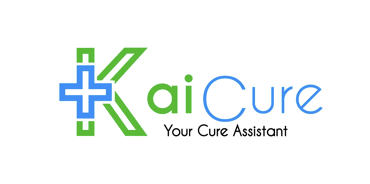Copyright ieyenews

Voice Recognition vs AI Scribes: Key Differences for Doctors Healthcare professionals spend nearly two hours on documentation for every hour of patient care. This administrative burden has sparked a revolution in medical transcription technology, with voice recognition systems and AI scribes emerging as two leading solutions. But which approach truly delivers on the promise of reducing documentation time while maintaining accuracy? Understanding the distinctions between these technologies is crucial for healthcare providers looking to streamline their workflows. Voice recognition converts spoken words into text, while AI scribes go several steps further by understanding medical context, generating structured SOAP notes, and integrating seamlessly with electronic medical record systems. The choice between these solutions can significantly impact your practice’s efficiency, accuracy, and overall patient care quality. Let’s explore how each technology works and which might be the better fit for your healthcare setting. How Voice Recognition Works in Healthcare Voice recognition technology, also known as speech-to-text software, converts spoken words into written text using advanced algorithms. Medical dictation software has evolved significantly from early systems that required users to pause between each word. Modern voice recognition systems can handle natural speech patterns and have been trained on extensive medical vocabularies. They recognize medical terminology, drug names, and anatomical references with increasing accuracy. Popular solutions like Dragon Medical One have become staples in many healthcare facilities. However, voice recognition systems essentially function as sophisticated dictation tools. They capture what you say and convert it to text, but they don’t interpret meaning or structure the information according to medical documentation standards. The responsibility for organizing information into proper SOAP notes format, ensuring clinical accuracy, and following documentation best practices still falls entirely on the healthcare provider. Understanding AI Scribes and Their Capabilities AI scribes represent a more advanced approach to medical documentation. These systems don’t just transcribe speech; they understand medical conversations, extract relevant clinical information, and automatically generate structured documentation. An AI scribe listens to patient encounters and identifies key clinical elements: chief complaints, medical history, physical examination findings, assessments, and treatment plans. The technology then organizes this information into properly formatted SOAP notes that align with medical documentation standards. Many AI scribes integrate directly with EHR systems, automatically populating relevant fields and reducing the manual data entry that traditionally follows dictation. Some advanced systems can even assist with medical coding by suggesting appropriate diagnosis and procedure codes based on the documented encounter. The AI component allows these systems to learn from patterns in medical documentation, becoming more accurate over time and adapting to individual provider preferences and specialty-specific requirements. Key Differences in Functionality The fundamental difference lies in the level of understanding and processing each technology provides. Voice recognition operates at the surface level, converting acoustic signals into text without comprehending medical context or clinical significance. AI scribes operate with clinical intelligence. They understand medical terminology in context, recognize when a symptom mentioned in passing warrants documentation rather than casual conversation, and can distinguish between current complaints and historical information. Documentation structure represents another major distinction. Voice recognition requires healthcare providers to consciously organize their dictation into a proper medical documentation format. AI scribes automatically structure information into SOAP notes, ensuring consistent formatting and comprehensive coverage of clinical elements. Integration capabilities also differ significantly. While voice recognition systems typically require separate steps to transfer dictated text into EMR systems, AI scribes often integrate directly with EMR systems, streamlining the entire documentation workflow. Accuracy and Efficiency Considerations Voice recognition accuracy has improved dramatically, with modern medical dictation software achieving 95-99% accuracy for clear speech. However, this accuracy rate applies to word recognition, not clinical accuracy or documentation completeness. AI scribes face the more complex challenge of clinical accuracy. They must not only transcribe words correctly but also interpret clinical significance, maintain medical accuracy, and ensure complete documentation. While word-level accuracy may be slightly lower initially, the clinical utility often surpasses that of traditional medical transcription approaches. Efficiency gains differ between the two technologies. Voice recognition can reduce typing time but may require significant editing and formatting. AI scribes aim to produce documentation that requires minimal editing, potentially offering greater time savings despite slower initial processing. The learning curve also varies. Voice recognition systems require training for optimal accuracy and ongoing attention to speaking clearly and structuring dictation properly. AI scribes typically require less user training but may need initial setup to understand specific provider preferences and specialty requirements. Integration with Medical Workflows Electronic medical record systems’ integration capabilities significantly distinguish these technologies. Voice recognition tools often function as separate applications, requiring copy-and-paste workflows or additional steps to transfer content into EHR systems. AI scribes frequently offer direct integration with EMR systems, automatically populating appropriate fields and maintaining data integrity across different sections of the patient record. This seamless integration reduces the risk of transcription errors and eliminates redundant data entry steps. Workflow disruption represents another important consideration. Voice recognition requires providers to consciously dictate their findings, potentially interrupting natural patient interaction patterns. Advanced AI scribes can passively listen to natural conversations, capturing relevant clinical information without requiring structured dictation. The impact on patient care varies between approaches. Voice recognition typically requires post-encounter documentation time, while AI scribes aim to complete documentation during or immediately after patient encounters, allowing providers to focus more fully on patient interaction. Cost and Implementation Factors Implementation costs differ substantially between voice recognition and AI scribe solutions. Traditional medical dictation software typically involves lower upfront costs but may require ongoing licensing fees and technical support. AI scribes often involve higher initial investment but may offer better long-term value through time savings and improved documentation quality. The total cost of ownership should include training time, ongoing support needs, and potential productivity gains. Technical requirements also vary. Voice recognition systems may require specific hardware, like high-quality microphones and sufficient processing power. AI scribes might need robust internet connectivity for cloud-based processing and integration with existing EHR systems. Staff training represents an ongoing cost consideration. Voice recognition systems require users to adapt their speaking patterns and learn specific commands. AI scribes typically require less extensive training but may need customization to match specific practice patterns and documentation preferences. Making the Right Choice for Your Practice The decision between voice recognition and AI scribes should align with your practice’s specific needs, patient volume, and documentation requirements. Consider your current documentation challenges, available technology infrastructure, and long-term efficiency goals. Voice recognition might suit practices that need basic dictation capabilities and have providers comfortable with structured speaking patterns. This approach works well for practices with existing efficient documentation workflows that simply need to reduce typing time. AI scribes better serve practices seeking comprehensive documentation automation, direct EMR systems integration, and minimal post-encounter editing requirements. These solutions particularly benefit high-volume practices where documentation time significantly impacts patient care capacity. Transforming Healthcare Documentation The evolution from traditional medical transcription methods to advanced AI scribes represents a significant shift in healthcare documentation approaches. While voice recognition provides valuable dictation capabilities, AI scribes like KaiCure offer the clinical intelligence and workflow integration that modern healthcare practices increasingly require. The choice between these technologies ultimately depends on your practice’s specific needs, current workflows, and long-term efficiency goals. Consider conducting pilot programs with both approaches to evaluate their impact on your documentation quality, provider satisfaction, and overall practice efficiency. As these technologies continue advancing, the gap between basic transcription and intelligent documentation assistance will likely widen, making the decision increasingly important for practices seeking sustainable documentation solutions.



